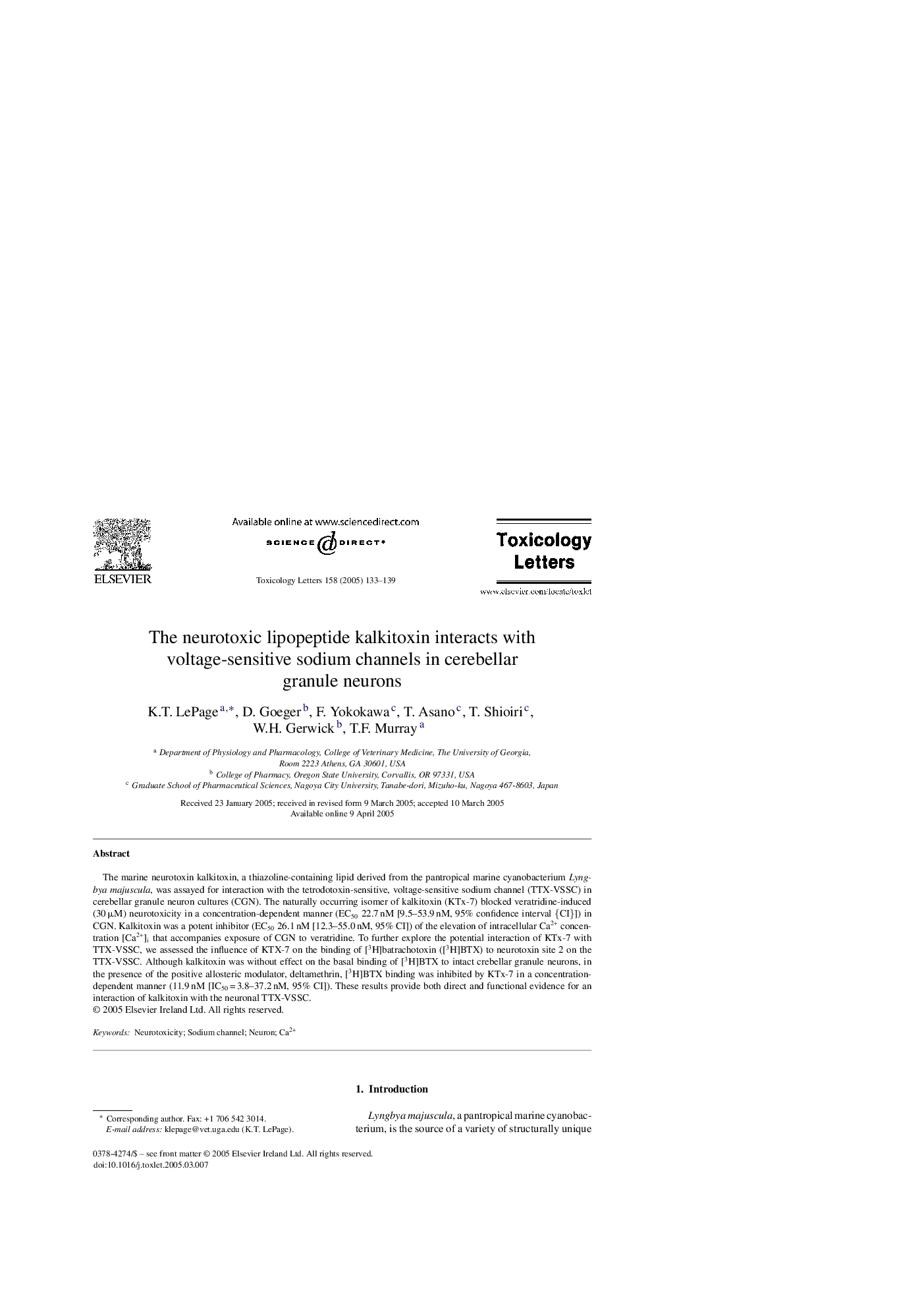| Article ID | Journal | Published Year | Pages | File Type |
|---|---|---|---|---|
| 9037123 | Toxicology Letters | 2005 | 7 Pages |
Abstract
The marine neurotoxin kalkitoxin, a thiazoline-containing lipid derived from the pantropical marine cyanobacterium Lyngbya majuscula, was assayed for interaction with the tetrodotoxin-sensitive, voltage-sensitive sodium channel (TTX-VSSC) in cerebellar granule neuron cultures (CGN). The naturally occurring isomer of kalkitoxin (KTx-7) blocked veratridine-induced (30 μM) neurotoxicity in a concentration-dependent manner (EC50 22.7 nM [9.5-53.9 nM, 95% confidence interval {CI}]) in CGN. Kalkitoxin was a potent inhibitor (EC50 26.1 nM [12.3-55.0 nM, 95% CI]) of the elevation of intracellular Ca2+ concentration [Ca2+]i that accompanies exposure of CGN to veratridine. To further explore the potential interaction of KTx-7 with TTX-VSSC, we assessed the influence of KTX-7 on the binding of [3H]batrachotoxin ([3H]BTX) to neurotoxin site 2 on the TTX-VSSC. Although kalkitoxin was without effect on the basal binding of [3H]BTX to intact crebellar granule neurons, in the presence of the positive allosteric modulator, deltamethrin, [3H]BTX binding was inhibited by KTx-7 in a concentration-dependent manner (11.9 nM [IC50 = 3.8-37.2 nM, 95% CI]). These results provide both direct and functional evidence for an interaction of kalkitoxin with the neuronal TTX-VSSC.
Related Topics
Life Sciences
Environmental Science
Health, Toxicology and Mutagenesis
Authors
K.T. LePage, D. Goeger, F. Yokokawa, T. Asano, T. Shioiri, W.H. Gerwick, T.F. Murray,
